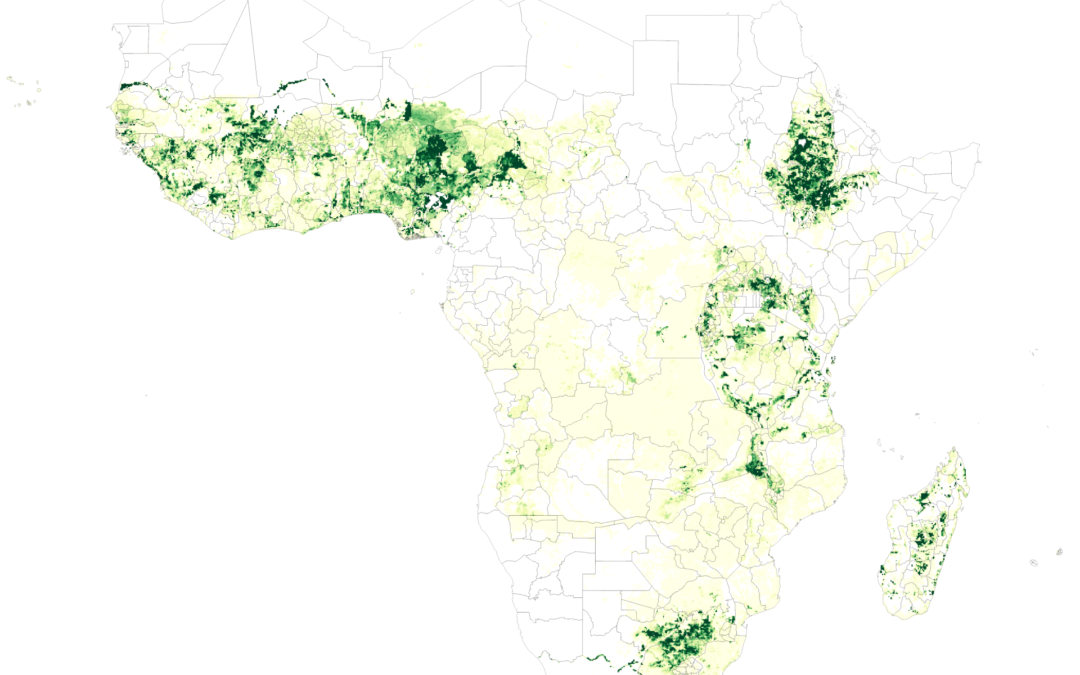Spatially-Disaggregated Crop Production Statistics Data in Sub-Saharan Africa for 2017

Supported by CGIAR Platform for Big Data in Agriculture, IFPRI’s MapSPAM team published a new version of Spatially-Disaggregated Crop Production Statistics Data (also known as Spatial Production Allocation Mode, SPAM, or MapSPAM) in Sub-Saharan Africa (SSA) for 2017. This new regional update, available to download from the IFPRI Dataverse, marks the fourth generation of the MapSPAM data series, following the global data for 2000, 2005, and 2010.
International Food Policy Research Institute, 2020, “Spatially-Disaggregated Crop Production Statistics Data in Africa South of the Saharan for 2017”, https://doi.org/10.7910/DVN/FSSKBW, Harvard Dataverse, V1
The MapSPAM database provides key crop production indicators, including area, production, and yield, for 42 crops, spatially-disaggregated on 10 km grids in CSV/DBF and GeoTIFF formats. The MapSPAM team at IFPRI (Liangzhi You, Ulrike Wood-Sichra, Zhe Guo, Yating Ru, and Jawoo Koo) works closely with CGIAR’s crop commodity-focused centers (e.g., CIMMYT for maize and wheat, AfricaRice and IRRI for rice, IITA and CIAT for tropical crops such as banana, plantains, and cassava, CIP for potatoes, and ICRISAT for sorghum, millet, and pulses) to collect data, review model results, and improve overall data quality. Over the years IFPRI released three major updates (for 2000, 2005, and 2010) and a number of minor releases. This SSA-focused update incorporated the latest crop production statistics data and a number of new geospatial input data layers. See the ReadMe file first to learn everything new in this version.
All data files and documentation are openly provided as a global public good through IFPRI’s data repository, Dataverse. The methodology of SPAM has been thoroughly reviewed and published as peer-reviewed journal articles and technical documents. A number of initiatives and academic journal articles are already using MapSPAM as their basis of analysis. If you haven’t, try MapSPAM and join the crop mapping community — your feedback is always welcome!
July 27, 2020
CGIAR-CSI





